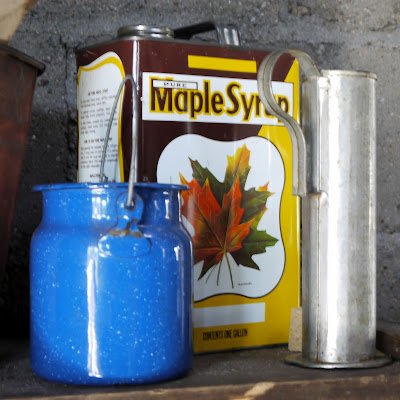Wednesday, March 21, 2012
Maple Sugar Time
The Setting: It...Is...In...The...EIGHTIES (Hoosband thought I should clarify that I mean temperature and not timeframe...though that would certainly be interesting)!
The Soundtrack: Birds chirping, laundry tumbling.
Steaming up the Oven: Banana-Nut Muffin Balls...and no, they will not be placed atop lollipop sticks and coated in chocolate later...not that there's anything wrong with that.
The Scenario: Before moving to Indiana, when I thought about maple syrup, I simply thought Vermont, but it turns out my new state knows a thing or two about syrup-making as well.
Two Saturdays ago (when shorts and flipflops remained things of fantasy) Hoosband and I drove to Indiana Dunes National Lakeshore for Maple Sugar Time, an annual event celebrating the sap harvest and looking back at maple sugar through the ages.
Maple sugar has been a product of North America since the time of the Native Americans, who harvested the sap not for what it could add to their pancakes, but as an important source of calories in its own right when other foods were scarce.
Since sticky, liquid syrup was challenging to contain and transfer, the Native Americans boiled the syrup down to sugar cakes that were easy to store in boxes and trade for other valuable items.
North American sugar-maple sap is sweeter than the sap found in the maples that thrive on other continents, making maple syrup an almost-exclusively North Amerciann treasure.
The sap is at its sweetest in late winter, when it can lazily pool in the trees' roots, before the trees' buds bloom.
It may not be the most enjoyable time for the maple harvesters to be at work in the forest, but it is worth it, since sap collected later in the spring, when it is hard at work flowing through the trees to nourish their branches, will be much more bitter.
Here at the Chellberg farm (now part of the national park), maple sap has been harvested and converted to syrup in the sugar shack since the 1930s, when the Chellberg's turned to their maple grove to make a living during the Great Depression.
The methods are the same now as they were back then.
Galvanized steel compartments were replaced with stainless steel for health reasons, but the basic set-up remains in place.
Contrary to what one might expect, the lighter the maple syrup the higher the price. These highest-quality, Grade A syrups are mostly sold to food manufacturers and candy-makers.
We got to do a little taste-test with the darker, cheaper, more flavorful, Grade B stuff and conventional pancake syrup (the latter of which typically contains little-to-no actual maple component).
Everyone in the group could tell which was which, but preferences were divided. Hoosband, loyal Log Cabin-er that he is, preferred the assertive flavor and almost aggressive sweetness of the fake stuff (high-fructose corn syrup, artificial colorings, flavorings, and a host of multi-syllable ingredients), while I would choose the sweet and subtle complexity of the real thing every time (even if it weren't the "natural" choice).
Conduct a little taste-yest for yourself with some of the following recipes:
Multi-Grain Pancakes for One
Whole Wheat Crepes
Corncakes
Morgan's Country Cornbread
Buttermilk Biscuits
Homemade Maple Brown Sugar Marshmallows
Thanks for reading! Here's to Being the Secret Ingredient in your Life.
Subscribe to:
Post Comments (Atom)






.JPG)






.JPG)

yes.JPG)
No comments:
Post a Comment